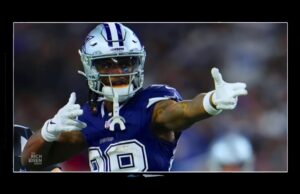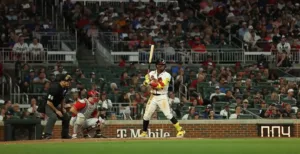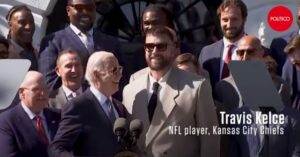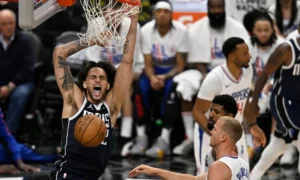Damian Lillard Traded To Bucks; Playing For Blazers For 11 Seasons
One of the NBA’s most commonly cited talking points was Lillard’s commitment to Portland, which had long since become his only team.
At long last, Damian Lillard got what he wanted. Mostly. The Milwaukee Bucks and Phoenix Suns have agreed to a three-team trade in which the seven-time All-Star guard from the Portland Trail Blazers will be acquired by the Milwaukee Bucks, the franchise said on Wednesday night.
Along with the unprotected first-round selection in 2029 and the unprotected swap rights in 2028 and 2030, Jrue Holiday, Deandre Ayton, and Toumani Camara are all heading to the Blazers as part of the transaction. Grayson Allen, Nassir Little, Jusuf Nurkic, and Keon Johnson join the Suns.
After years of what seemed like back-and-forth with Portland about how to assemble a championship-caliber team around him, Damian Lillard made a trade request on the second day of his 2023 free agency. The summer of 2022 saw him sign a maximum two-year contract extension. Including $63.2 million in the 2026–27 season, Lillard is owed $216.2 million over the following four seasons.
In his comeback season after being sidelined for periods of the previous two seasons by injury, Lillard averaged 32.2 points per game, a career-best. He missed 77 games during that span, more than twice the number of games he missed in his first 10 seasons combined. In the last two years, the Trail Blazers have failed to qualify for the playoffs.
In the 2018–19 season, Lillard guided the team to eight postseason trips and the Western Conference finals. The Blazers, despite possessing the finest player in team history, frequently experienced first-round exits and were never able to reach the top of the league.
In addition to holding the team records for 3-pointers made, free throws attempted, and scoring average, Damian Lillard departs Portland as the Blazers’ all-time top scorer (19,376 points), surpassing Clyde Drexler in 2022.
Reasons for Damian Lillard, departure from the Portland Trail Blazers
One of the NBA’s most commonly cited talking points was Lillard’s commitment to Portland, which had long since become his only team. But once the 2020–21 campaign came to a poor conclusion, rumors about whether he would ever leave for brighter pastures rose to new heights.
Although Denver was without injured star guard Jamal Murray, despite Lillard scoring 55 points on 24 shots in a crucial Game 5 that Portland lost in double overtime, and despite holding a 14-point lead in Game 6, the Blazers were eliminated by the Nuggets in six games, marking their fifth Round 1 exit in eight postseason appearances under head coach Terry Stotts.
Following that demoralizing loss, Lillard made it plain in his on-the-record remarks that the Blazers’ front office should act with greater urgency in their renewed pursuit of championship contention. At the time, general manager Neil Olshey and the Blazers’ front office were acting with a similar level of urgency.
Olshey sacked Stotts and hired Chauncey Billups, a first-time head coach, in his place. He also re-signed swingman Norman Powell to a five-year, $90 million contract, added Cody Zeller, Tony Snell, and Ben McLemore to the roster as rotational depth, and fired back.
Without significant additions and with Lillard missing a career-low 29 games due to an abdominal injury that ultimately required surgery, Portland fell to a 27-55 record, which set the stage for what Lillard called “critical summer,” in which he signed a $122 million extension to his previous supermax contract to remain under contract in Portland for two more years.
Lillard had a career year in 2017, finishing third in the NBA in scoring at 32.2 points per contest and tenth in assist production at 7.3 per night. This season, he is back in complete health. Although Portland struggled to a 33-49 record and another lottery selection, this time third overall, it was not enough to shake the Blazers out of their rut.
Joe Cronin, the new general manager of the Blazers, was presented with a challenging decision after being selected with the No. 3 overall pick. Would he use that alluring trade chip, as well as maybe brilliant young players like Anfernee Simons or Shaedon Sharpe, to lure in seasoned professionals who might help Lillard’s team become more competitive? Or was it preferable to wait and make the decision, continuing to develop Portland’s youthful core while also keeping in mind that choosing to follow the route of reconstruction would prompt Lillard to make a date request?
The draft was held and then ended. The G League Ignite standout Scoot Henderson, a 19-year-old über prospect who just so happens to play Lillard’s position, was selected by the Blazers with the selection they had kept. When Lillard and his agent, Aaron Goodwin, met with Cronin to talk about the future, Lillard allegedly stated he would hold off on making any choices until after the start of free agency.
Portland paid Jerami Grant $160 million promptly as free agency started. The only franchise Lillard has ever known was approached the next morning with a trade request.
The Blazers stated that they would want to fulfill that desire. It was exacerbated by the fact that Lillard had Miami down as his primary destination and that his representatives were trying to suppress interest by warning off other possible suitors that they would be getting a disgruntled Dame if they dealt for him.
(The NBA then released a note to all 30 teams highlighting the fact that any statements implying a player “will not fully perform the services called for under his player contract in the event of a trade” will result in league suspension.)
Former Sixth Man of the Year Tyler Herro was the star of the most often predicted packages Miami would send to the Pacific Northwest. Portland favored arrangements that would shift Herro to a third club since adding another combo guard who would snuff out touches and playmaking possibilities for Simons, Sharpe, and Henderson didn’t sound all that tempting to the Blazers. This was considered a challenging task given that Herro was set to begin a four-year, $120 million contract extension.
Consequently, there is a holding pattern. The Blazers didn’t like Miami’s offer enough to immediately complete a trade, even though they’d hoped for a return for Lillard comparable to what the Timberwolves gave up for Rudy Gobert or the Suns paid for Kevin Durant.
As there were no other genuine proposals on the table, the Heat didn’t feel pressured to bid against themselves or improve their offer in any way. The Blazers also signified a desire to merely stay there and wait for better things, since Lillard had inked that agreement to keep him under team control until at least the summer of 2026.
At the July Las Vegas Summer League, Cronin informed reporters, “We’re going to be patient. We’re going to do what’s best for our team. We’re going to see how this lands. And if it takes months, it takes months.”
It made sense. The nearest “deadline” in the procedures came when NBA clubs reassembled for media day on Monday before the start of training camp. (Even the query of which camps Damian Lillard would be ready to report sparked some tension.)
As it turned out, the Blazers had “done a lot more talking with teams in the [previous two weeks] than they did probably in at least a month-plus prior,” according to Adrian Wojnarowski of ESPN. They had their sights set on putting together multi-team deals that could net them a larger package of draft picks and young players than a straightforward one-to-one replacement with Miami would offer.
Lillard, on the other hand, has stated in several interviews with the media that while “in a perfect world” he would want to remain in Portland, he cannot help but notice that both he and the Blazers organization are headed in opposite directions.
“You don’t want the same thing any more, and you show me that you don’t want the same thing. We don’t want the same thing.”
Damian Lillard





